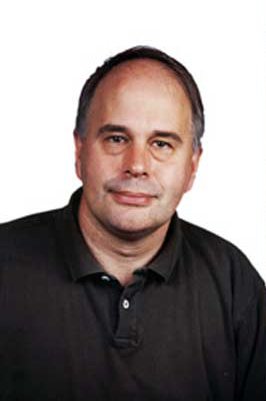Robert Calderbank
- Associated organizations
- Princeton University, AT&T Labs
- Fields of study
- Communications
- Awards
- IEEE Millennium Medal
Biography
Wireless communication is transforming everyday life through ever more capable cellular networks and broadband wireless access. Future goals include data rates close to that of wired communications, real-time applications and hours of untethered service. The paper entitled “Great Expectations: The Value of Spatial Diversity in Wireless Networks”, which was published in February 2004 in Proceedings of the IEEE by Suhas N. Diggavi, Naofal Al-Dhahir, Anastasios Stamoulis and Robert Calderbank, is an important reference to experts in the wireless field.
The paper addresses the engineering challenges that exist in meeting these goals in the face of limits on spectrum, battery life and other resources. It captures the major advances made in the past decade and focuses on spatial diversity, a primary tool that can be leveraged at many levels, including the physical layer, and for multi-user networking protocols. In the physical layer, spatial diversity is captured through multiple transmit and receive antennas. After a decade of research and development, multiple antenna technologies are emerging in mainstream cellular and alternate broadband access standards. In wireless networks, multi-user spatial diversity has emerged as a powerful mechanism for enhancing the performance of data communication. The paper illustrates the benefits of spatial diversity across the networking layers, emphasizing the fundamental underlying principles. At an overall systems level, the impact of spatial diversity is expressed in terms of improvements to user experience in the application layer, to link reliability, spectral efficiency, and as a way to lower deployment and operating costs. This paper captures the value of spatial diversity to the cross-layer design of wireless networks, identifies the extent of current knowledge, and indicates future research directions.
Robert Calderbank is professor of electrical engineering and mathematics at Princeton University in New Jersey, where he directs the program in applied and computational mathematics. He came to Princeton in 2004 from AT&T Labs, where he was Vice President for Research and responsible for the world’s first industrial research lab, primarily focused on data at scale. At AT&T, he was also responsible for innovations in a series of voiceband modem standards that moved communication practice close to the fundamental theoretical limits established by Shannon. An IEEE Fellow and a member of the U.S. National Academy of Engineering, he is a former editor-in-chief of the IEEE Transactions on Information Theory and a recipient of the IEEE Millennium Medal.
